
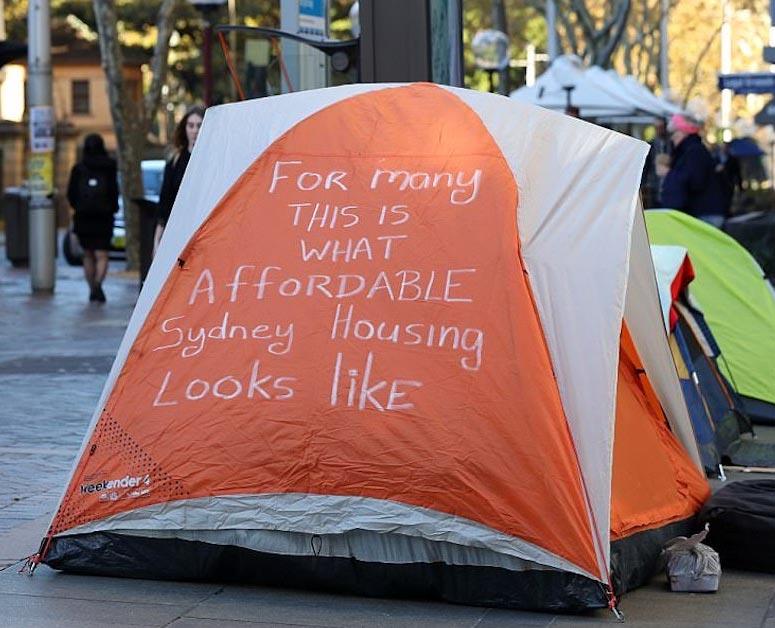

T H E H O U S I N G C R I S I S SPECIAL EDITION VOICE
AUTUMN 2024 • ISSUE 145
INNER SYDNEY
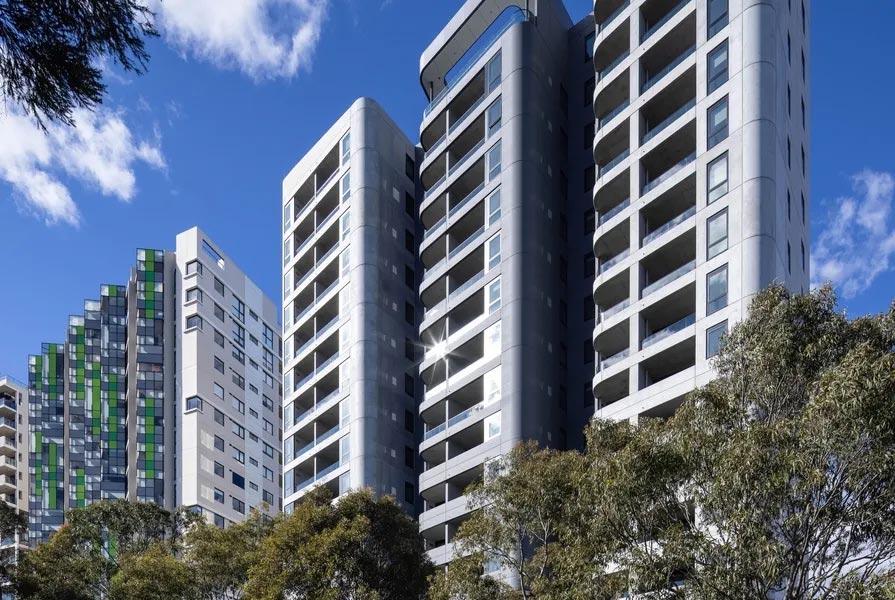
2 | Inner Sydney Voice | Autumn 2024 | innersydneyvoice.org.au 4 Editorial 5 NEWS Keeping character, even in a crisis 6 NEWS People’s Commission into the Housing Crisis seeks public input Meet Newtown Woman of the Year 2024 7 Ending ‘no grounds’ evictions: The key to housing justice 9 NEWS FEATURE Newtown Neighbourhood Centre averts a homelessness disaster 10 A sure bet to boost social housing 13 Power holders: Women lead housing reform 15 Making art in public housing: ‘Houso Sweet Houso’ 18 BOOK REVIEW The Great Housing Hijack 10
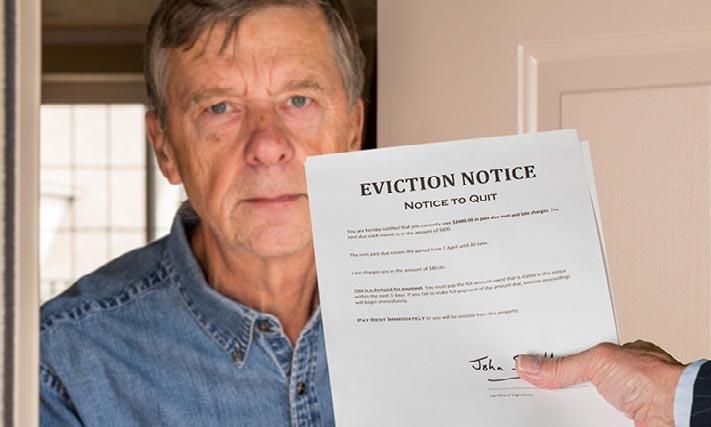
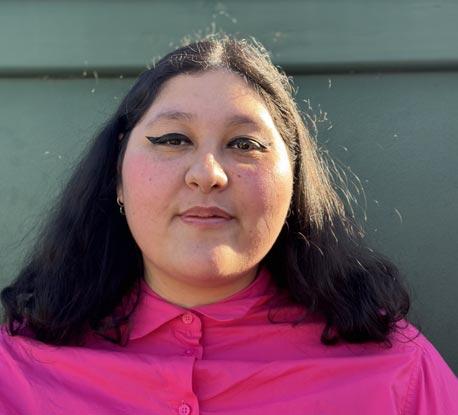
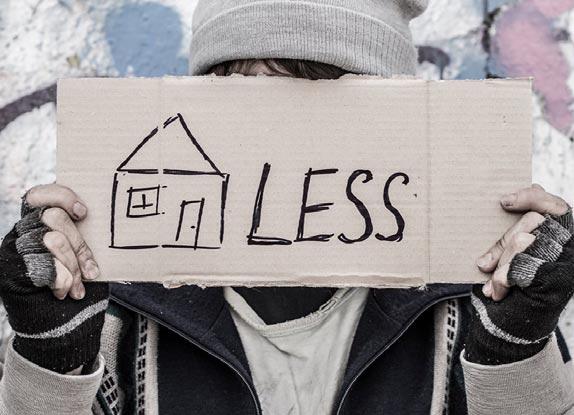
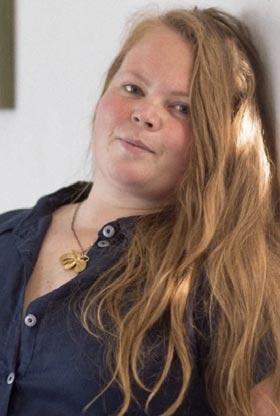
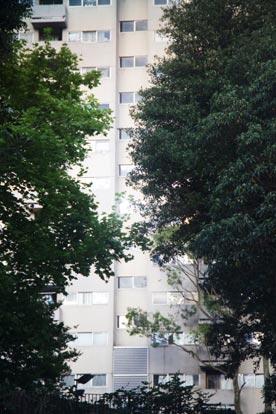
innersydneyvoice.org.au | Autumn 2024 | Inner Sydney Voice | 3 19 Q&A: Unlocking the answers to your housing questions 22 What to do in a crisis 24 What’s in our place? 26 COMMUNITY VOICES ‘In the last 15 years rent has doubled, but my gross income has only increased by about 10%.’ 27 FROM THE VAULT Celebrating twenty years 1975-1995 CONTENTS 7 15 24 22
Inner Sydney Voice is the journal of the Inner Sydney Regional Council for Social Development Inc. We are a not-for-profit organisation committed to the idea of information as a tool for community development. Inner Sydney is defined as the LGAs of City of Sydney, Bayside, Randwick, Waverley, Woollahra, and Inner West.
ACKNOWLEDGEMENT OF COUNTRY
ISV office is located on the land of the traditional owners of the Gadigal people of the Eora Nation. We acknowledge and pay our respects to the traditional owners of the lands across the areas we service, including the Bidjigal, Birrabirragal, Gadigal, Gweagal and Wangal people. We acknowledge that sovereignty over these lands has never been ceded.
We pay our respects to Elders past and present.
EDITOR
Isabelle Hore-Thorburn
CONTRIBUTORS
Catherine Callaghan | Emily Greenwood
Evanna Kelly | Marika Kontellis
DESIGN Stevie Bee
MEMBERSHIP + SUBSCRIPTIONS
Saskia Eichler-Cheney
PUBLISHER
Inner Sydney Regional Council for Social Development Inc trading as Inner Sydney Voice
ABN 86 770 127 254
Rear 770 Elizabeth Street Waterloo NSW 2017
PHONE 9698 7690
EMAIL admin@innersydneyvoice.org.au
FACEBOOK facebook.com/innersydneyrcsd
TWITTER/X @innersydneyrcsd
WEBSITE innersydneyvoice.org.au
DISCLAIMER + COPYRIGHT
The opinions expressed in Inner Sydney Voice magazine do not necessarily represent the views of the publisher, the publication nor our funders. Unless stated otherwise, opinions belong to contributors, not the organisation or group with which they work. While every effort has been made to ensure the accuracy of the information, no responsibility can be accepted by the publisher for any contributions.
Copyright belongs to the contributors.
Join and subscribe: Please see back cover
EDITORIAL
A modern, well-functioning society recognises housing is its foundation
When I told people I was moving back to Sydney, I was met with a resounding, “Don’t!” I didn’t take it personally. Sydney has a pretty damning reputation as an inheritocracy — inhospitable for renters like myself. I had braced myself to rent a prohibitively expensive rental market, but I was utterly unprepared for the scale of the housing crisis.
In putting this issue together, sector workers, policymakers, community members, and decision-makers all spoke about how the commodification of housing was destroying communities. Piecemeal policies and chronic underfunding by successive governments have not only obliterated the concept of housing as a fundamental human right but have also complicated the fight for justice in other areas.
How can we support survivors of domestic violence when the emergency housing system is so broken? (page 22) How can we ensure everyone ages with dignity when longstanding developments are carved up and poorly maintained? A ‘sure bet’, as Cathryn Callaghan argues, is to invest in more social and affordable housing. (page 10)
Still, to imagine a city where housing is secure, affordable, and available, we need a new framework for discussing housing, homelessness, and the home itself. Whether it is a boarding house (page 9), public housing (page 15), or a private rental (page 7), it is more than a roof; it is our home: The foundations from which we can forge healthy relationships, build careers, and nurture communities.
Thankfully, we aren’t alone in wanting a better, fairer housing system: Neighbourhood centres and
homelessness services are pulling off incredible feats to ensure vulnerable people find appropriate accommodation in a crisis (page 9) Organisations such as the Tenants Union are pushing for urgent changes to NSW tenancy law, and new neighbourhood coalitions are forming around the city to protect local character against unchecked development (page 5)
As Tone Wheeler documented in A History of Public Housing for ISV in 2021, Australia has squandered every opportunity to address housing crises effectively. Yet, with each mismanaged crisis, inner-city residents have rallied together to form unions, community coalitions, and movements like the Green Bans to fight for housing justice.
In the face of our current crisis, community organisations, not-for-profit community housing provision and peak advocacy agencies, and newly formed coalitions of residents are mobilising around the message that without secure housing, nothing is possible.
These people are on the frontlines; they understand the problem and the stakes. They have told us loud and clear that a modern, well-functioning society grounded in respect, dignity, and equality recognises that housing is its foundation.
It’s a message understood by the new generation of power holders (page 13) — women who can shape the future of housing — and, ultimately, the future of our city.
Inner Sydney Voice is no newcomer to mobilising communities and bringing voices together for long, lasting change. We hope this issue informs and inspires you to join us in an equal say, for a fairer world.
Isabelle Hore-Thorburn communications@innersydneyvoice.org.au
4 | Inner Sydney Voice | Autumn 2024 | innersydneyvoice.org.au
AUTUMN 2024 | ISSUE 145 | ISSN: 0155-7106
VOICEINNER SYDNEY
Keeping local character, even in a crisis
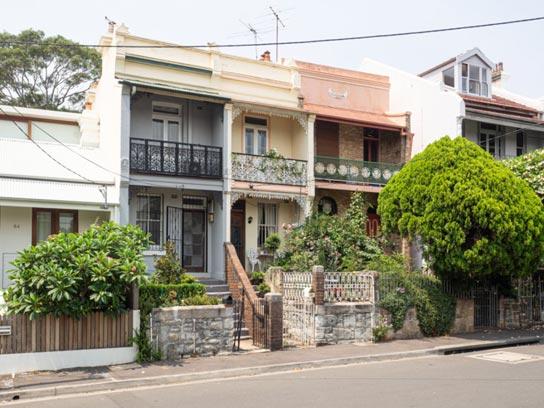
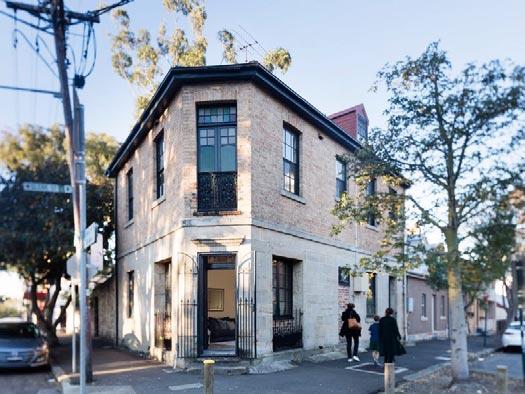
Can
we preserve the essence of our local areas while addressing the pressing need for more affordable housing? A new alliance of groups and residents “with special skills who live in and love Sydney, its Inner West, Inner South West and middle ring historic suburbs” thinks so.
The Residents Action Coalition was recently formed in response to “rushed, undemocratic, destructive plans” that were quietly released by the NSW Government just before Christmas. At the heart of their concerns are the ‘Transport Oriented Development Plans and the Diverse and Well-located Homes Reforms’, which they see as a significant threat to heritage and
strategic local planning.
Members of the Coalition see heritage buildings and precincts “as people’s assets to be protected and managed well for future generations”. Heritage-rich streets, small groups of shops, and distinct industrial precincts give residents across the city a sense of place and community.
They reject the false narrative that heritage and housing cannot co-exist and that community engagement (ie NIMBYism) and local planning and land use zoning are at the root of the housing crisis. These residents argue that instead of drawing 400 and 800metre circles around stations and town centres, we need local councils and communities to work on local place-
The Boarding House Project
Seniors Rights Service is tackling the pressing issues older people face in boarding houses.
According to Homelessness NSW, many of these residents are older men, with a third relying on the disability pension. Unfortunately, current conditions often leave this vulnerable
group at risk of eviction. Fear of reprisal also prevents these residents from seeking improvements or asserting their rights.
The Boarding House Project connects seniors with local stakeholders to offer free legal education, personalised advice, and advocacy services. Seniors Rights Service is actively seeking
based planning.
They argue that current proposals leave the housing crisis in the hands of developers who potentially stand to benefit from the speculative market: “The plans do not detail mechanisms or protections to meet the stated goals of improving supply, affordability, diversity, choice, and amenity or creating ‘thriving local communities’, and in some cases will have the opposite effect.”
In response to their concerns, the Residents Action Coalition has prepared a petition to the government, urging more inclusive and sustainable approaches to urban planning.
n More information at facebook.com/ residentsactioncoalition

partnerships with local services to extend support to older boarding house residents statewide.
n To request a visit from the Boarding House Project at a local service near you, call 9281 3600 or 1800 424 079 (press 2 for the Legal Team) or email legal@seniorsrightsservice.org.au
innersydneyvoice.org.au | Autumn 2024 | Inner Sydney Voice | 5
. noticeboard
NEWS
People’s Commission into the Housing Crisis seeks public input
Everybody’s Home is convening Australia’s first People’s Commission into the Housing Crisis. The national campaign was launched in 2018 by a coalition of housing, homelessness, and welfare organisations.
This Coalition of key peak bodies includes:
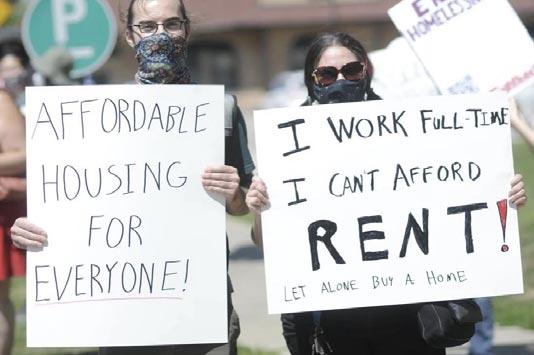
Homelessness NSW, DV NSW, and the Community Housing Industry Association, as well as local services such as City West Housing, Common Equity NSW, and the Women’s Housing Company.
The People’s Commission into the
Housing Crisis offers a platform for individuals and community members across the Inner Sydney Region to discuss the impacts of the housing crisis. These stories will be collated in front of decision-makers to ensure meaningful action is taken before the
next federal election.
Housing is clear to be a key federal election issue.
The Commission is cochaired by former NSW Senator, Doug Cameron, and housing expert Prof Nicole Gurran. They will convene in-person hearings, culminating in an outcome document with recommendations.
n Everybody’s Home is calling on people from all walks of life to contribute to the People’s Commission into the Housing Crisis. Take the short survey at everybodyshome.com.au/ peoples-commission/sharing-yourstory
Meet Newtown Woman of the Year 2024
Sarina Afa was surprised when she was nominated for Newtown Woman of the Year. Though humbled by the recognition of her decades of organising for housing justice, she won’t be diverted from the issue she is most concerned about — advocating for good housing outcomes for people impacted by redevelopment in Redfern and Waterloo.
She knows what it means to experience housing stress. For years, she lived in a bedsit at the back of a shop in the heart of Newtown. Her life changed when she secured a singlelevel home in Eveleigh thirty years ago.
Today, 46 diverse households make up this safe and inclusive inner-city community. It’s no surprise then that she has been leading the charge to
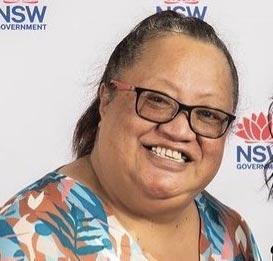
protect her home and community from demolition.
Sarina’s community leadership is building social capital. Demolish homes, and you risk demolishing that social capital that has the potential to keep giving back for decades to come, she says.
Sarina knows that she and her neighbours are not alone, but trying to
protect public housing in the context of a severe housing shortage is no easy task. It is also difficult to argue against the high-rise affordable housing public policy.
Sarina explains that if it’s just about numbers, then demolishing 46 houses to reclaim land and replace with highrise adds up. But we aren’t just counting houses! These 46 homes make up a community. It’s impossible to comprehend demolition if you count community well-being and cohesion, as well as its long-term economic impact.
The end game for Sarina is a recognition that high-rise isn’t the only option. She believes that affordable housing comes in different shapes and sizes and government should be focused on building communities — not just housing.
Congratulations and thank you Sarina.
6 | Inner Sydney Voice | Autumn 2024 | innersydneyvoice.org.au NEWS
Ending ‘no grounds’ evictions THE KEY TO HOUSING JUSTICE
Moving house ranks among life’s most stressful experiences. The associated financial strain, physical exertion, social disruption, and emotional turmoil are severely compounded when households are forced into relocation.
Every 18 minutes, this happens to renters — often retirees and families with school-age children — due to the current ‘no grounds’ eviction provisions in NSW tenancy laws. These provisions allow landlords to evict tenants at the end of a lease or during a lease for no reason whatsoever.
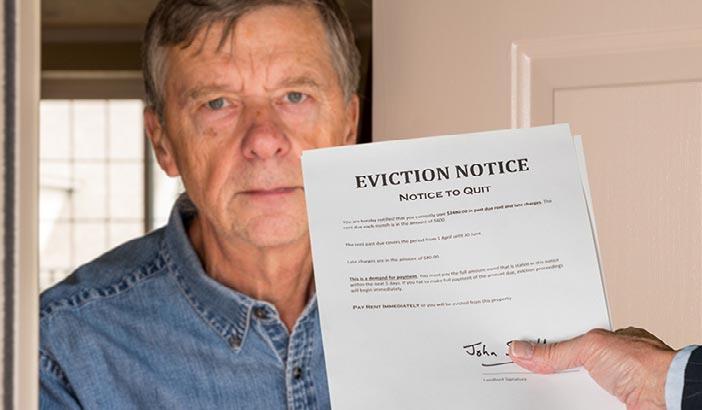
Amidst an escalating rental crisis, an increasing number of individuals and families are thrust into precarious and unsafe housing situations. The popular narrative is that this is a mere imbalance in supply and demand, remedied by building more houses.
Conversations with members of the rental community and the welfare sector tell a different story; they offer a better, fairer, and more workable solution.
Frontline stakeholders repeatedly identify an end to ‘no grounds’
innersydneyvoice.org.au | Autumn 2024 | Inner Sydney Voice | 7
evictions as critical in curbing housing insecurity and homelessness. The Inner Sydney Tenants’ Advice and Advocacy Service (ISTAAS), part of Redfern Legal Centre, provides free legal advice and assistance to renters in the inner Sydney region. Preventing homelessness is the central aim of their daily work, and unsurprisingly, demand for their services has increased significantly over the last couple of years.
CEO Camilla Pandolfini told ISV: “Drawing on our experience assisting tenants, we have been advocating for reform and improvements to residential tenancy laws in NSW, including the importance of ending ‘no grounds’ evictions and the need for improvements to the current public housing repairs system.”
Last year, organisations, including ISV, were encouraged by the new Labor Government’s commitment to
TRINA JONES, RENTAL COMMISSIONER
improving NSW renting laws, through the introduction of reasonable grounds provisions to replace existing ‘no grounds’ eviction sections in the Residential Tenancies Act 2010. It’s been a year since NSW Labor formed government. Disappointingly, we haven’t seen actual progress (such as a Bill in Parliament) to end ‘no grounds’ evictions.
Speaking to ISV, NSW Rental Commissioner, Trina Jones reemphasised the critical need to end ‘no grounds’ evictions to “rebalance the rental market” and provide muchneeded “certainty for both renters and landlords.” Certainty is a crucial feature of a fair housing system, and we are encouraged by the Commmissonier's commitment to a consultation process that prioritises “people whose lives and livelihoods will be impacted.”
A “rebalance” is undoubtedly needed, but given the asymmetry of
Ending ‘no grounds’ evictions is a significant reform for NSW, and the goal is to rebalance the rental market and increase certainty for renters and landlords.
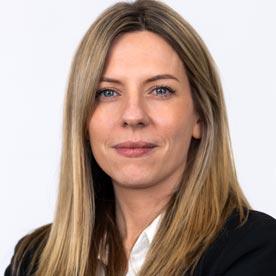
We had a record number of responses to the Have Your Say survey, which sought views on a range of rental reform topics. I am continuing to consult widely on the details of implementing ‘no grounds’ evictions and regularly providing advice to government to ensure we get this reform right in consultation with the people whose lives and livelihoods will be impacted. I am working with renters, landlords and industry representatives to ensure that my recommendations are evidence-based and informed.
I look forward to the government bringing this package to parliament so we can improve renting in NSW.
the current housing system, any proposed legislative package needs to prioritise the rights and welfare of renters to establish fairness.
We are at a critical juncture for housing justice, and it’s heartening to see a growing alliance rallying around meaningful solutions. As Tenants Union CEO Leo Patterson Ross emphasises, now is the time for individuals to voice their support and advocate for covering all renters under reasonable grounds protections: “Everyone deserves to know why they are losing their home and be protected from unfair evictions.”
n The Tenants’ Union is encouraging renters and community supporters to visit its website and tell decisionmakers to end unfair evictions for all renters now.
See tenants.org.au/ news/emaildecision-makers-now
LEO PATTERSON ROSS, TENANTS’ UNION CEO
Everyone deserves to know why they are losing their home and be protected from unfair evictions. Our health, safety and dignity depend on it. Renters and their advocates have been calling governments for reform to eviction rules for many years — it has been unfinished business for almost 50 years and has undermined the experience of renting for even longer.

We’ve seen growing concern and support from the wider community as well as the welfare sector, who see first-hand the impacts on friends, families and communities. Reform for reasonable grounds was an election commitment for the current Government, but it’s not yet certain that it will apply to all renters.
There is now a broad coalition of people who recognise the harm untransparent and unfair evictions cause and are standing up to call attention. Now is a crucial time to join and tell decision-makers why you think it is so important to cover all renters with reasonable grounds on our website.
8 | Inner Sydney Voice | Autumn 2024 | innersydneyvoice.org.au
Neighbourhood centre averts homelessness disaster
The sudden closure of Dulwich Hill Lodge sent shockwaves through the community in February: 75 boarding house residents faced eviction with less than three weeks' notice. It could have spelled disaster, particularly for those who had called the boarding house home for the last twenty years. Instead, a rapid and united intervention led by Newtown Neighbourhood Centre (NNC) helped residents avoid homelessness and secure appropriate alternative housing.
It’s hard to overstate what a remarkable achievement this was, especially given the urgency and magnitude of the eviction and the historically limited availability of affordable housing.
Through effective collaboration and community-driven action, the closure was turned into another local service success story: NNC and a coalition of government agencies, specialist homelessness services, and community organisations rallied together to rehome the residents of Dulwich Hill Lodge.
Karen Hunter, Homeless Services Manager at NNC, explains how the coordinated response prevented homelessness and offered essential support to the residents.
WHAT HAPPENED TO DULWICH HILL LODGE?
“I've worked for the service for 12 years, and it's always been a boarding house where you could get a room,”
says Hunter. “Some people have been there ten years. There was one gentleman that had been there 20 years!”
Hunter couldn’t believe the boarding house was closing until residents brought their eviction notices in. But it’s a trend across several Local Government Areas — Boarding house stock is dwindling as market conditions reward property owners for converting or redeveloping their buildings.
How did Newtown Community Centre respond?
Boarding houses seldom offer residents security of tenure and often offer accommodation that falls below minimum community standards, so residents rely on the support and expertise of small homelessness services.
Before the eviction, Newtown Neighbourhood Centre case-managed 45 of the boarding house residents. In the face of closure, they needed to find a way for the housing system to absorb 75 people in a few weeks.
“We were pretty shocked at the scale of the eviction,” said Hunter. “We needed an emergency response from the Government.”
“First, we contacted higher-level decision makers at Homes NSW and requested more resourcing to find housing alternatives for people. I also reached out to the NSW Housing Minister, Rose Jackson, who was very responsive. She got in contact straight away. It was a joint effort from the Housing Minister and Departments.”
NNC then created three on-site “housing hubs” with a specialist host team from Homes NSW and
homelessness services and agencies. Haymarket Foundation, Wesley Mission, Neami National, and Vinnie's played pivotal roles in coordinating resources and addressing the diverse needs of displaced residents.
“We had Mental Health and the Aged Care team down there,” Hunter said. “Apart from the precarious housing situation, there was a high percentage of very vulnerable people with different vulnerabilities, from mental health to people who are frail, aged and disabled. They were very stressed and disrupted by this whole thing.”
AN “ABSOLUTE SUCCESS”
For the residents, agencies, and services involved, the rapid and comprehensive response orchestrated by NNC was a resounding success, which showcased the importance of community organisations and government bodies working together to mitigate the impacts of housing crises on vulnerable populations.
A CALL FOR MORE FUNDING
The demand for services like Newtown Neighbourhood Centre will only increase as the housing crisis worsens. Its crucial role in rehoming Dulwich Hill Lodge residents underscores the vital support these centres provide. Investing in neighbourhood centres is critical. They can coordinate responses to housing emergencies and address the root causes of the crisis. Long-term, stable funding is needed to ensure they can effectively handle future crises like this, giving residents individualised support with dignity and care.
innersydneyvoice.org.au | Autumn 2024 | Inner Sydney Voice | 9
NEWS FEATURE
A sure bet to boost social housing
With a career spanning thirty years, Cathryn Callaghan has held senior private sector executive HR and change management roles and has a deep interest in community and political engagement, local government, and sound public policy. She was Chief of Staff to a NSW MP and shadow minister, and holds a bachelor’s degree in Economics and a masters in Commerce (Organisational Behaviour). Here, Cathryn unpacks the impacts of a marketled model and argues that government investment in housing is the logical solution to the housing crisis.
The private housing market has moved a long way from what many assert should be its essential purpose: to provide a secure home for all. Property is a major investment vehicle in Australia — building wealth for investors and their families. According to Core Logic, the total value of residential estate in December 2023 was $10.3 trillion. That’s right. Trillion.
Feeding this voracious appetite is a generous taxation system that provides substantial and expensive incentives and, until very recently, cheap money, with a sustained period of historically low interest rates for borrowers.
There’s a lot at stake in the private housing sector. Not just for investors but for people who have consistently and persistently been failed by it.
A growing city and country certainly needs more homes for its people.
Economics 101 tells us that the failure to supply enough product to match
demand, especially a non-negotiable one like housing, will drive up prices. The housing rental market is a good example. Take a look at the low vacancy rates for units in Surry Hills (2010). (See figure 1, page 11)
A healthy rental market has vacancy rates of 2-3%. As of December 2023, the vacancy rate for units in Surry Hills, was a decidedly unhealthy 1.1%. Contrast that to the dark months of the pandemic, where we saw a rate of around 6.8%. During that time, prospective tenants saw asking weekly
10 | Inner Sydney Voice | Autumn 2024 | innersydneyvoice.org.au
opinion
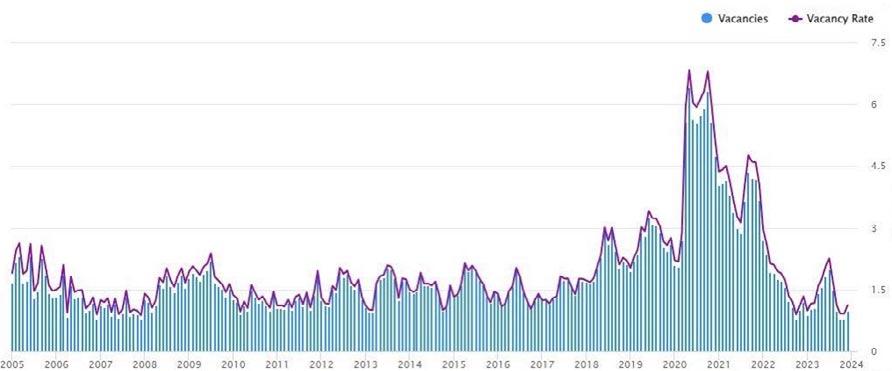
rents for units in Surry Hills at $488. This is in stark contrast to the average of $808 being asked in February 2024!
But here’s the thing. These are all about averages. Average units. Average tenants. Average incomes.
WHAT DOES THE WORLD LOOK LIKE IF YOU’RE TRYING TO GET BY ON VERY LOW OR LOW INCOMES?
According to the ABS, 47% of lowincome renters in NSW are in housing stress, paying more than 30% of household income on housing costs.
In November 2023, the annual Rental Affordability Index sounded the alarm. Sadly, our beautiful city of Sydney is the least affordable city in the country. (See Table 1, page 12)
There’s an old saying that people used during the Second World War to describe someone who not only survived but thrived: “He/she had a good war.” Let’s be frank — Sydney is in the grip of a housing crisis, but many are having a “good crisis.” Good luck to them. But let’s make sure that those dealing with actual or threatened homelessness, precarity, and housing
stress are front and centre of government planning when it comes to turning things around.
The private housing market consistently and persistently fails verylow to low-income people. This is compounded by the complexities that come from chronic ill-health, disability, family violence and intergenerational trauma. Public housing has traditionally provided a safety net, with large government building programs ensuring that the stock grew to match a growing population. More recently, the broader offering of social housing
Source: Housing assistance in Australia (aihw.gov.au/haa) Published 29 June 2022
innersydneyvoice.org.au | Autumn 2024 | Inner Sydney Voice | 11 FIGURE 1 RESIDENTIAL VACANY
SOURCE: SQM RESEARCH Highcarts.com VACANCIES VACANCY RATE (%) VACANCIES VACANCY RATE 7.5 6.0 4.5 3.0 1.5 0.0 750 600 450 300 150 0 2005 2006 2007 2008 2009 2010 2011 2012 2013 2014 2015 2016 2017 2018 2019 2020 2021 2022 2023 2024 Accessed from SQM Research – Property – Residential Vacancy Rates – Surry Hills postcode 2010 | 9 February 2024 POPULATION VS NUMBER OF DWELLINGS 2006–2021 NSW population 2006 6.82 million NSW population 2021 8.10 million INCREASE: 1.28 million people Number of dwellings in 2006 140,109 Number of dwellings in 2021 154,492 INCREASE: 14,383 dwellings THE STOCK OF SOCIAL HOUSING ISN’T KEEPING UP WITH DEMAND OR POPULATION PROPORTION OF SOCIAL HOUSING HOUSEHOLDS 2014 5.0% 2021 4.7%
RATES POSTCODE 2010
19% 10% Á Á
RENTAL AFFORDABILITY INDEX (RAI) 2023 Q2
SOURCE: SGS Economics & Planning November 2023
Accessed and adapted from: https://sgsep.com.au/projects/rental-affordability-index 9 February 2024
Household Type
Single person on Jobseeker
(public and community housing) has offered a genuine alternative to the vagaries of the private housing market.
The local government area of Sydney, like Greater Sydney, continues to grow. While the overall number of social dwellings has grown, there has been a steady decline proportionally. The stock of Affordable Rental Housing remains a niche offering.
The City of Sydney LGA has identified that it needs 14,000 additional affordable rental and social dwellings, setting a target of 7.5% social housing and 7.5% affordable rental housing of all residential housing stock by 2036. Shelter NSW commends the City for going where the NSW Government hasn’t — publishing clear targets with a vision of what an inclusive city should be. We recommend that a minimum of 10%
social housing is the mark of a great city.
At the end of December 2023, 57,367 people across NSW were waiting for social housing (this includes 8,347 priority cases). Of those, nearly 5,000 households were in the inner city and surrounding allocation zones.
A growing state requires a steady supply of housing to meet the needs of its population, and it’s true that NSW has slipped behind. But for those of us advocating for a secure home for all, it is the supply of social and affordable housing
that must dramatically increase.
The good news? Increasing social and affordable housing is a great investment in the future of NSW — a sure bet. Government has the power, money and moral imperative to make it happen.
Let your local Member of Parliament know that this is the type of housing supply you want funded and fasttracked.
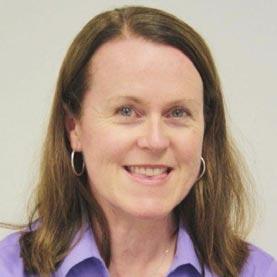
n Cathryn Callaghan is the Senior Policy Officer at Shelter NSW. Shelter NSW is an independent, non-profit organisation that has been advocating for better housing outcomes for low-income people since 1975. Its vision is a secure home for all NSW residents.
12 | Inner Sydney Voice | Autumn 2024 | innersydneyvoice.org.au
Single part-time worker parent on benefits Single pensioner Pensioner couple Student sharehouse Single-income couple with children Minimum wage couple Hospitality worker Single full-time working parent Dual-income couple with children
gross annual income $22,100 $44,800 $36,700 $54,300 $84,800 $104,500 $91,800 $62,800 $104,500 $209,000
Indicative
income 60% or more 60% or more 60% or more 60% or more 38-60% 38-60% 38-60% 38-60% 38-60% 20-25%
Rent as a share of gross
Extremely unaffordable Extremely unaffordable Extremely unaffordable Extremely unaffordable Extremely unaffordable Extremely unaffordable Severely unaffordable Severely unaffordable Severely unaffordable Moderately unaffordable
1
Relative Unaffordability Category
TABLE
POWER HOLDERS Women lead housing reform
BY Marika Kontellis, EXECUTIVE OFFICER, INNER SYDNEY VOICE
Accident or design? Strategic or organic? Planned or inevitable? Whatever the case, the stars have aligned, and for the first time in history, affordable housing reform is in the hands (and hearts) of an all-woman band of leaders.
Whilst some would argue that we shouldn’t even be talking about gender, I think it is time to celebrate and look towards the future with optimism.
Women have been managing the tsunami of impact of poor affordable and public housing decisions for at least fifty years. For the past twenty years, those leading community organisations, not-for-profit community housing provision and peak advocacy agencies know and understand “what is wrong”. Perhaps even more important than that is that they also know “what is strong”. This knowledge, skill and deep commitment are poised to make a difference to people, families and communities across NSW.
These five women are the power holders. They face incredible challenges from competing interests that cannot be managed in isolation. They need to stay true to their strengths and the way they have always worked.
Deep collaboration must underpin the new way to ‘get things done around here.’ While their leadership styles may differ, their publicly held values are shared, and their focus on ‘housing first’ to solve some of our most wicked social problems will be their legacy.
The Hon Rose Jackson
Minister Rose Jackson was elected, and before she knew it, was the new Labor leader put her in charge of not one, but six portfolios: Housing, Homelessness, Mental Health, Youth, Water, and the North Coast. Having listened to Minister Jackson in a number of public meetings I get the sense that she does not like to work alone. She sees the value in collaboration, and she knows the importance of listening to people with lived experience. She also speaks about her deeply held values and unwavering commitment to social justice.

innersydneyvoice.org.au | Autumn 2024 | Inner Sydney Voice | 13
opinion
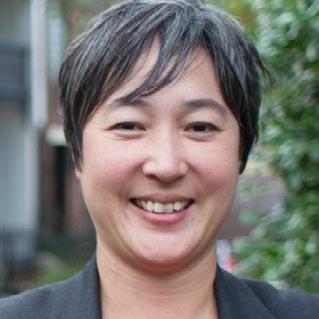
Jenny Leong
Member for Newtown Jenny Leong is the NSW Greens’ spokesperson for Housing. Leong knows that the voices of those with lived experience of housing stress must be brought to decision makers. The Member for Newtown’s call for a massive investment in NSW public housing is underpinned by the principles of housing as a human right, a housing-first approach, renters’ rights, and zero-emission housing.
Will the Minister and the Greens’ spokesperson for Housing be able to work together in ways that deliver real outcomes for people in NSW? Will they push party politics aside and focus on working together? Can they do politics differently? I believe they can. I know they must.
Debbie Georgopoulos
Debbie Georgopoulos was recently appointed Chief of Staff to Minister Jackson. As the immediate past CEO of the Women’s Housing Company, Debbie brings nearly three decades of public policy and program experience from government and non-government organisations in Australia. She knows and understands the impacts of a housing crisis on individuals, families and communities. She gets it. Now she gets the chance to set it.

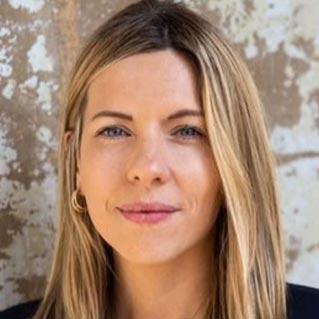
Trina Jones
The 2021 Census showed more than two million people rent in New South Wales. That means more than 30% of the population are renters, and they are the fastestgrowing tenure in the state.
Trina Jones, NSW’s first-ever Rental Commissioner, says her mission is to “amplify the voice of renters, working with renters and landlords to improve renting in NSW.”
Trina has more than 15 years’ experience leading responses to complex social issues including housing affordability, homelessness, community safety, food insecurity and drug and alcohol use in Australia, the UK and Ireland. She has held leadership positions as CEO of Homelessness NSW, Deputy Chair of Homelessness Australia, and in local government. Her experience and skill in community engagement and development will need to float to the top as she moves to focus law and public policy on a fairer rental landscape.
Rebecca Pinkstone
Rebecca Pinkstone is the inaugural CEO of the newly formed government department, Homes NSW. Rebecca is a known and respected community leader with almost two decades of experience in the housing sector, most recently as the Chief Executive Officer of community housing provider, Bridge Housing. Prior to that, she held senior policy and strategy roles with the NSW Government. She is heading up this new government department that consolidates the housing and homelessness functions of the Department of Communities and Justice (DCJ), the Land and Housing Corporation (LAHC) and the Aboriginal Housing Office (AHO).
Rebecca and her team have also been tasked with turbocharging the construction, maintenance and repair of social and affordable homes across our state.
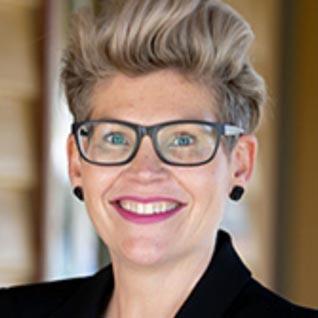
14 | Inner Sydney Voice | Autumn 2024 | innersydneyvoice.org.au
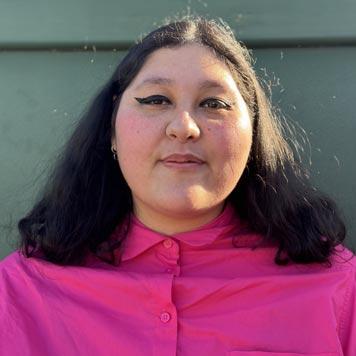
MAKING ART IN PUBLIC HOUSING
‘HOUSO SWEET HOUSO’
If you found yourself on Regent Street in Redfern in February, you might have noticed the particularly relevant window display at the Bearded Tit. The small street space was plastered with paste-ups by artist Emily Greenwood (pictured above), proclaiming, “HOUSING IS A HUMAN RIGHT”.
It’s a reminder that often gets forgotten within the housing crisis discourse, along with the voices of people who live in social housing and who experience housing insecurity. But this neighbourhood queer bar is known for amplifying underrepresented communities and addressing community needs through its exhibitions.
‘Knowing Me in The Quiet’, delved into the deeprooted flaws within colonial systems and the notion of ‘home’. Curated by Lillian Colgan, each piece “captures a sense of precarity and melancholy in the present”.
We spoke with Emily about their work, ‘Houso Sweet Houso’, and The Bed Zine’ and how their upbringing in public housing has profoundly influenced their artistic practice.
The exhibition examines how we shape our sense of self in conversation with the objects and spaces we occupy. How did growing up in public housing shape your conversations about self?
A lot of my work deals with my identity as a mixed-Tongan person, but the most impactful part of my identity is being someone who was raised in public housing. And I still find myself silencing that aspect of my identity, which is so important to who I am and how I approach things in life. So, I decided to make the work and the central thesis around that aspect of my identity. I feel like it’s something that isn't spoken about in the visual arts field or art world, even in Australia.
That’s why the show’s concept made sense to me: A lot of my youth was spent at home [in social housing]; I spent a lot of time in my four walls, my bedroom, which I shared with my sister. We created a lot of culture from that: That was the inception point for my entire practice.
In any representation of public housing, I wanted to be authentic and from people who actually live in public housing. They never consider the people who occupy that space. Opportunities are not given to people in public housing enough to speak about their own experiences, and that’s what I get with my [bedroom] scene and with the work and the project.
innersydneyvoice.org.au | Autumn 2024 | Inner Sydney Voice | 15
The show also explores the deep flaws in the notion of ‘home’. Can you talk about that in relation to your work?
I moved around a lot as a child. It was tumultuous and there was a lot of instability, and we moved house seven times, which is an important aspect of my history. Home, to me, is political in a way that it isn’t for someone who grew up in a home their parents owned. That is a political point, and it’s sad that for people who live in homes that their parents own — It’s just a place to relax, like a sanctuary, whereas when I visit my mum, it’s frustrating because there’s always going to be something going wrong: the fence is broken, and the owner, who is the New South Wales Government, isn’t going to fix it, but I have to live there without that security of a gate closing.
I think about like how my family came to public housing: My mum had no other choices and a lot of other people that I grew up around who lived in public housing and who I still know had no other choice. They were either refugees, fleeing domestic violence, or just had no other opportunities in life. There should be enough public housing available to every person in Australia, that’s how much I think it should be accessible.
So, I don’t think there’s anything wrong with it, but for everyone who grew up around us, it was a last resort. In my research, I found that all governments worldwide have to do this thing, otherwise there will be chaos. But it’s mainly to save face; having public housing shows that they are a civilised government. But now, in 2024, when we’re in a cost-of-living crisis, these services are no longer accessible to people who need them.
How did growing up in social housing inform your practice?
During those years, I was making these zines — little punk political manifestos — that were an outlet for me over a span of five years. But initially, with the ‘GRRL ZINE’ series, I
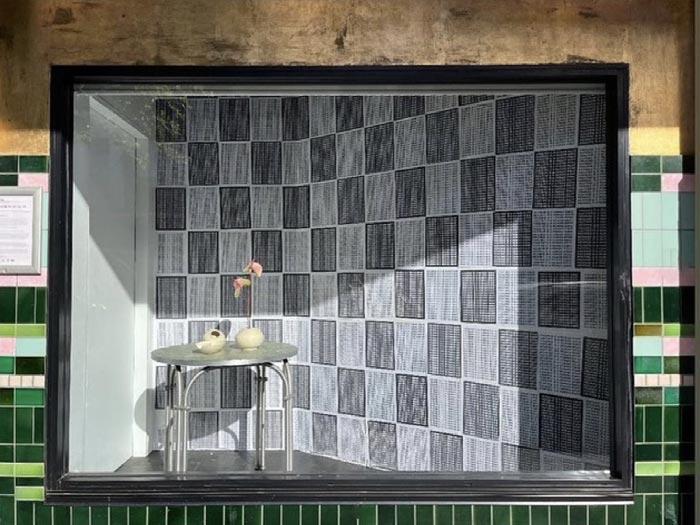
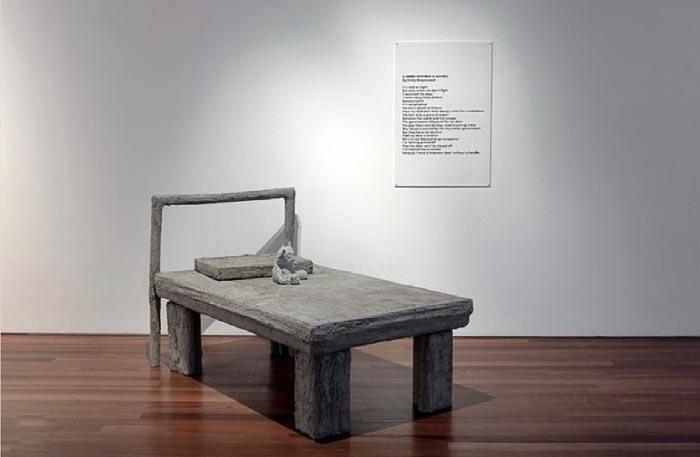
TOP LEFT HOUSO SWEET HOUSO: THE BED ZINE (2023) adapted for the “Knowing Me In The Quiet” show curated by @girl_introjected @thebeardedtit
BOTTOM LEFT HOUSO SWEET HOUSO: THE BED (2023) BY EMILY GREENWOOD
Concrete mâchè coating, upcycled milk carton and soft drink can frame. 160cmL x 90cmW x 101.25cmH
didn’t want to speak about how I grew up in public housing. I was afraid people would read it and think I didn’t know anything. I don’t live in public housing anymore, but that’s my continued experience of the world.
I know journalists on TV who would never admit publicly to growing up in public housing, and that’s for their safety. That’s their right; honestly,
because that’s the cards we were dealt. If you are privileged enough to go to university or have an opportunity when you are from public housing, then you’re not necessarily going to speak about it all the time because that could also be traumatic for you. But I feel like it becomes continuously buried.
Making this culture is the only way for us to reclaim our identities. That’s
16 | Inner Sydney Voice | Autumn 2024 | innersydneyvoice.org.au
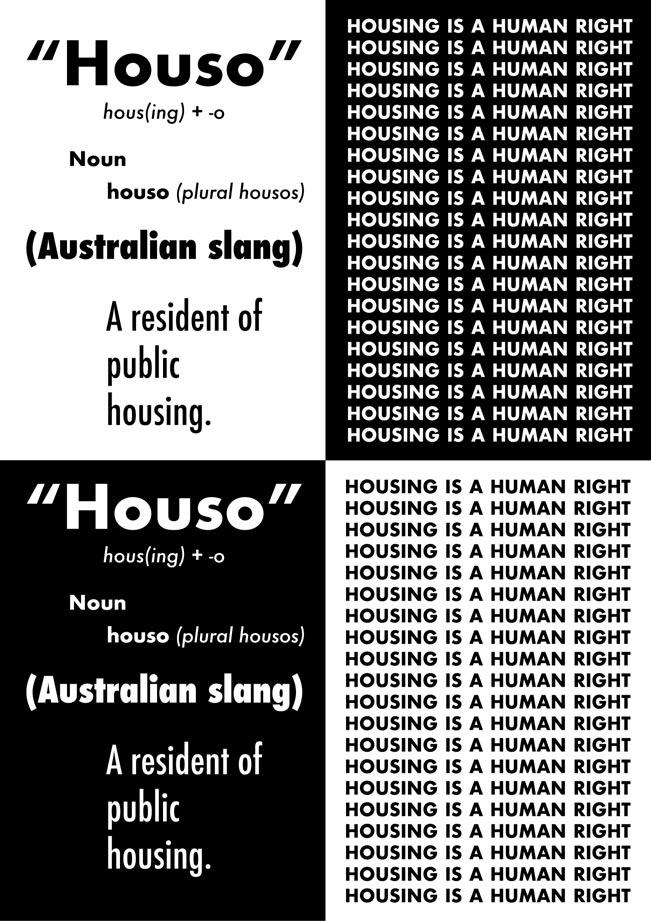
why with this work at the Bearded Tit and with the concrete bed, I was like, “No, l don’t care what other people have to say. This is my history”.
I want to just give my opportunity to myself because there’s not enough first point of view, and that’s inauthentic to me. That’s how history gets written, but that’s not how it should be remembered.
The bedroom scene on the street is wallpapered with the “housing is a human right”. Why did you use paste-ups?
We chose paste-ups because we were trying to get the zine across. The zine was made with the bed, so I made them to reproduce information. Print is a very important aspect of visual arts because it reproduces information and
makes it accessible.
The Redback Graphix Collective influenced my entire project. In the ’80s, they worked with the striking steelworkers in Wollongong and the Wollongong Out of Workers’ Union. Their whole story influenced my practice and obviously speaks to my foundation in the punk and riot-grrrl movement.
I hadn’t done paste-ups in nine years, and even then, it wasn’t something I exhibited, they were just something I put up around my suburb.
Can you talk about how you thought about the bedroom space and its relationship to Regent Street and Redfern?
I was hesitant at first, taking up space where it is and talking about
gentrification. I thought, “Is this contributing to the problem? Me not being from Redfern or not having history here and coming in and saying these things?”
But that is the point of solidarity. Everything that’s going on in Redfern in the past 30 years and the gentrification: It is unfathomable how a Eurocentric society would continue to displace Indigenous people from their homes. And it’s not just Indigenous people who have history in public housing. It’s getting worse for everyone. But the residents who are being displaced are never at the centre of the conversation.
[For example,] in my research, I looked at concrete and the materials used in public housing. But I couldn’t find anything from a first-person point of view. The people in that space, the actual residents, weren’t mentioned once. This is in academic journals about society and culture.
But that’s always how things are presented: “These residents living in this suburb in public or affordable housing, it’s just like they just live hopeless lives.” I think about my mum because she moved into the apartment she lives in now, which is the seventh place I moved to as a child. She said, “I’m not moving again like this is the place I’m living in. I’m living in this place like forever now.”
That’s my home, I spent half my life there. I feel frustrated that other people whose parents own their own house consider it to be their permanent residence. That’s their home, and it’s always going to be their home. For us, there is always this fear, especially back in 2015, that we would get kicked out due to gentrification. Around the same time, the Sirius building was being sold off, which added to the frustration. These spaces are our homes; we’ve lived here longer than people I know whose parents own their houses. But occupying space is [a luxury] only available to those who can afford it.
innersydneyvoice.org.au | Autumn 2024 | Inner Sydney Voice | 17
BOOK REVIEW with Marika Kontellis
The Great Housing Hijack
Cameron K. Murray
Cameron Murray is an economist and consultant specialising in property markets, environmental economics, and corruption.
He is a Research Fellow in the Henry Halloran Trust at The University of Sydney.
His latest book, The Great Housing Hijack, is about the hoaxes and myths keeping prices high for renters and buyers in Australia.
The Great Housing Hijack reveals how vested interests control the property market in Australia, and offers a solution for genuinely affordable housing for those who need it.
Everyone claims to want affordable housing, but no one wants cheap housing.
While Australians on regular incomes

dream of lower rents and prices, the housing policy debate has been hijacked, sailing further away from workable solutions.
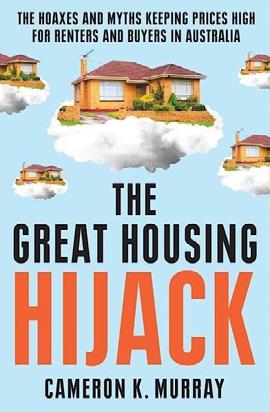

Cameron Murray reveals how property insiders shape the housing market and its policy settings. He explains what property developers really mean when they call for more supply to provide affordable housing. He shows why landlords and the real estate industry resist rent controls and why the tax and first-home buyer policies of the main political parties
achieve little for first-home buyers. The hoaxes created by the Housing Cheer Squad hide the brutal
truth: for every winner in the property market, there is a loser.
For anyone who wants to truly understand the housing market in Australia, The Great Housing Hijack is essential reading. Drawing on the best housing policies around the world, Murray shows how Australia could create a genuinely affordable housing program without compromising the interests of existing property owners.
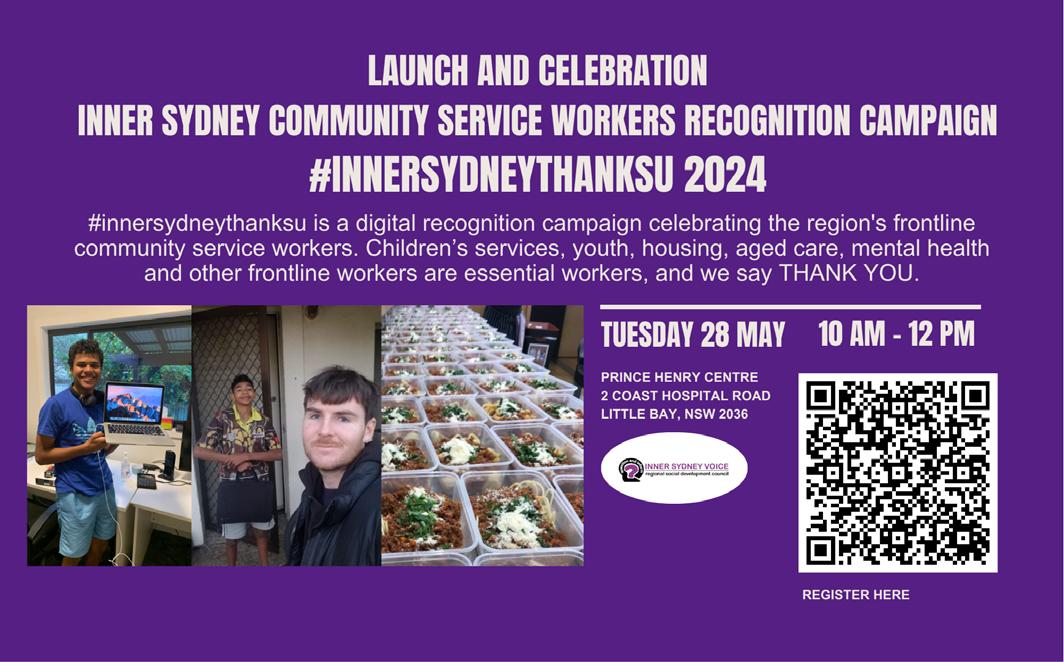
18 | Inner Sydney Voice | Autumn 2024 | innersydneyvoice.org.au
Q+A Unlocking answers to your housing questions
There are major shifts and a restructure happening in NSW Housing. With the formation of the new Homes NSW Department, it’s easy to feel lost. That’s why we’ve gathered insights and responses from tenants and decision-makers to provide the most accurate and up-todate answers to your housing questions.
At the Child and Family interagency and Waterloo residents network meeting, you asked: How will the new Homes NSW affect us (community members, children and families)?
The changes will not affect current tenancies. However, the new department aims to change how community members interact with housing and homelessness functions.
For example, it will overhaul how social housing maintenance is conducted across 95,000 of the state’s social housing properties. They intend to implement “a new and ‘simpler’ back-to-basics model.” As we know, the current privatised system doesn’t work
– it’s confusing and disjointed.
A new maintenance hub and app will reportedly be operational by mid-2024. The proposed hub should mean improved responses, with trained experts who can better address tenants’ questions and coordinate work orders.
Families don’t need to do anything right now – official correspondence will now come from the Homes NSW team, and there will be a new name for what many call the “Department of Housing” or “LAHC.”
Residents of Aboriginal Housing Office properties will continue to be supported as they are now, and the Homes NSW team will now support those living in LAHC properties.
innersydneyvoice.org.au | Autumn 2024 | Inner Sydney Voice | 19
Isn’t it just creating a new department? Are there three departments now?
There will be one Department. It brings together the housing and homelessness functions of the Department of Communities and Justice (DCJ), the NSW Land and Housing Corporation (LAHC), the Aboriginal Housing Office (AHO) and key-worker housing functions from across government under one roof.
Homes NSW was created as a new division within DCJ. It reports directly to the DCJ Secretary through the new CEO, Rebecca Pinkstone, previously of community housing provider Bridge Housing. Several executive Directors will report to her.
The AHO, LAHC, and Housing Services teams were transferred from the Department of Planning and Environment to the Department of Communities and Justice on February 1, 2024.
At a recent RedWatch meeting in Waterloo, Minister Rose Jackson explained that Homes NSW aims to
“make accessing support services easier for community members and families by combining services, expertise and skills under one roof to help tenants.”
“As a division within DCJ, Homes NSW aims to provide safe and secure homes through social and affordable housing while delivering support and services that minimise the repetition of homelessness experiences.”
At the Inner and Eastern Sydney Child and Family Interagency, you asked: Why do Housing Officers send people who have gone to them for housing back to an NGO and request that the NGO send the Housing Department a letter of support for the person, explaining why the person needs housing?
We contacted Minister Rose Jackson’s office to answer this, and they were aware of the problem. They responded:
n There are times when this is required as part of a specific
procedure, but in many cases, it is done to gather as much information as possible to best help the resident with their request. We strongly expect that NGOs and Community Housing Providers follow their obligations at all times and provide a high level of service to the residents they look after.
n Asking for more information shouldn’t imply a lack of belief in the individuals’ requests, and we will look into how we can do this better and more respectfully.
n There is definitely room for improvement with the current process, and we understand why people may see it that way. With the creation of Homes NSW, we must work towards streamlining these requests, and we have raised this issue with Homes NSW to resolve. As always people should feel free to get in touch with our office and raise any issues they may have –we are more than happy to hear your feedback and advice on how we can do things better.
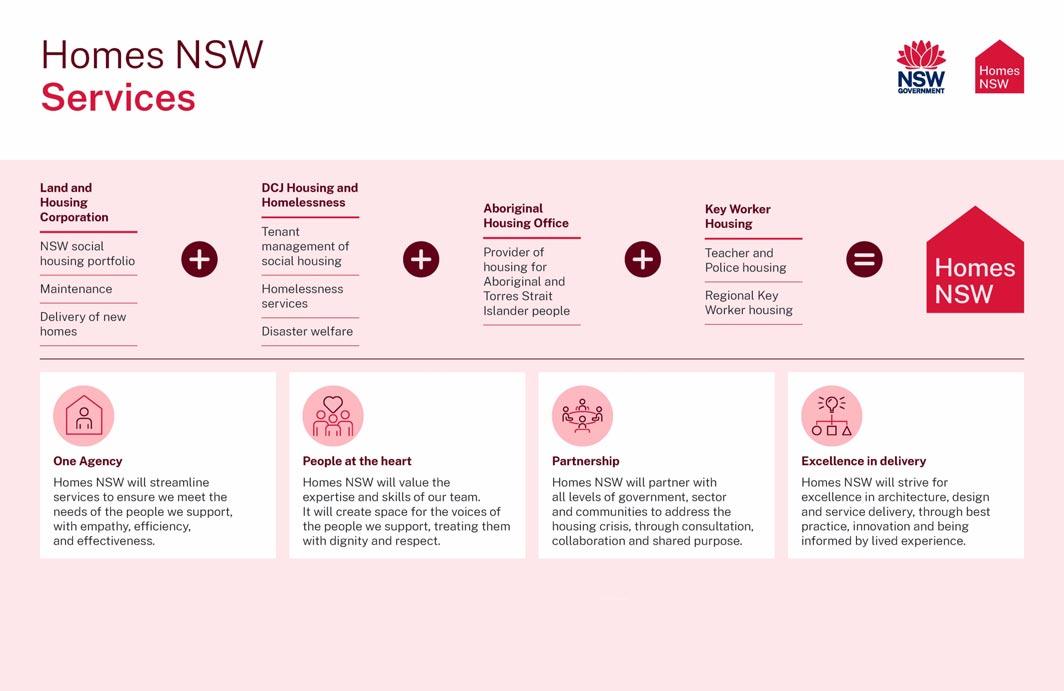
20 | Inner Sydney Voice | Autumn 2024 | innersydneyvoice.org.au
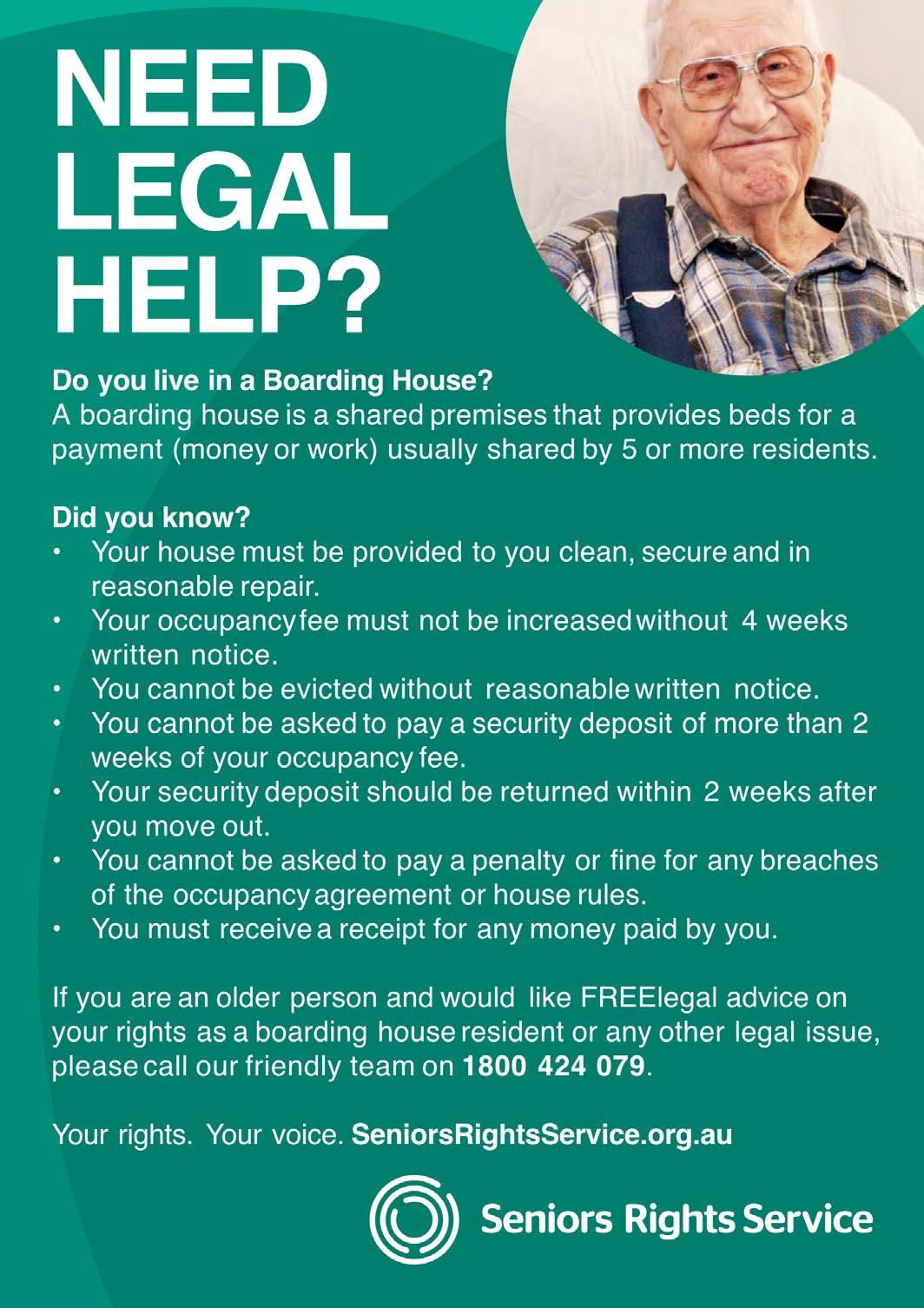
innersydneyvoice.org.au | Autumn 2024 | Inner Sydney Voice | 21
WHAT TO DO IN A CRISIS
Life events such as the death of a loved one, sudden job loss, or relationship breakdowns can trigger a chain of events leading to homelessness. A recent report from Homelessness NSW sheds light on the escalating crisis, with Minister for Housing and Homelessness Rose Jackson highlighting the harrowing reality faced by women, children, and working families forced to live in cars, tents, or on the streets.
Journalists and commentators often remind us that we are all just one missed paycheque or "bad decision" away from homelessness. While this sentiment is meant to raise awareness, it overlooks the deeper systemic issues and structural inequalities that perpetuate housing insecurity. Yes, more people are facing homelessness for the first time, but the same vulnerable groups are kept in a cycle of housing insecurity due to a flawed and unjust system. The rampant commodification of
housing under successive governments has exacerbated the unjust features of the housing system, which disproportionately harms vulnerable groups such as renters from refugee backgrounds, children, people with disabilities, older adults, and Indigenous peoples.
Meanwhile, the chronic underfunding of social housing, homelessness prevention services, and support infrastructure has widened these disparities. That means that people grappling with housing insecurity or the looming threat of homelessness must navigate a convoluted and inadequately funded system to access the safety and shelter that is their fundamental human right.
In October, ISV held a housing forum where we invited local councils, key service providers and peak agencies in the housing and homelessness support space to present to services working with children, families and young people to speak about how the housing crisis is impacting their clients and organisations in central and eastern Sydney. The forum shed light on the important work being done and the
biggest challenges facing the sector: In a particularly illuminating presentation, Catriona Brown, Homeless Engagement Practitioner at the Benevolent Society outlined the key housing options for people facing homelessness, as well as the barriers to access and limitations of these housing recourses.
On the day that someone gets evicted, for example, they can call Link2Home on 1800 152 152 to apply for temporary accommodation (TA) for a maximum of 28 days. This presents challenges in securing stable housing beyond the initial 28-day period because individuals must demonstrate ongoing efforts to find permanent housing while navigating a system with limited availability and reliance on external services.
Brown noted that people are required to extend their TA every two days by providing a rental diary to show that they have been looking for their own accommodation without success. They are also required to provide Centrelink income statements, bank statements, ID, and proof that they need to leave the place they were
22 | Inner Sydney Voice | Autumn 2024 | innersydneyvoice.org.au
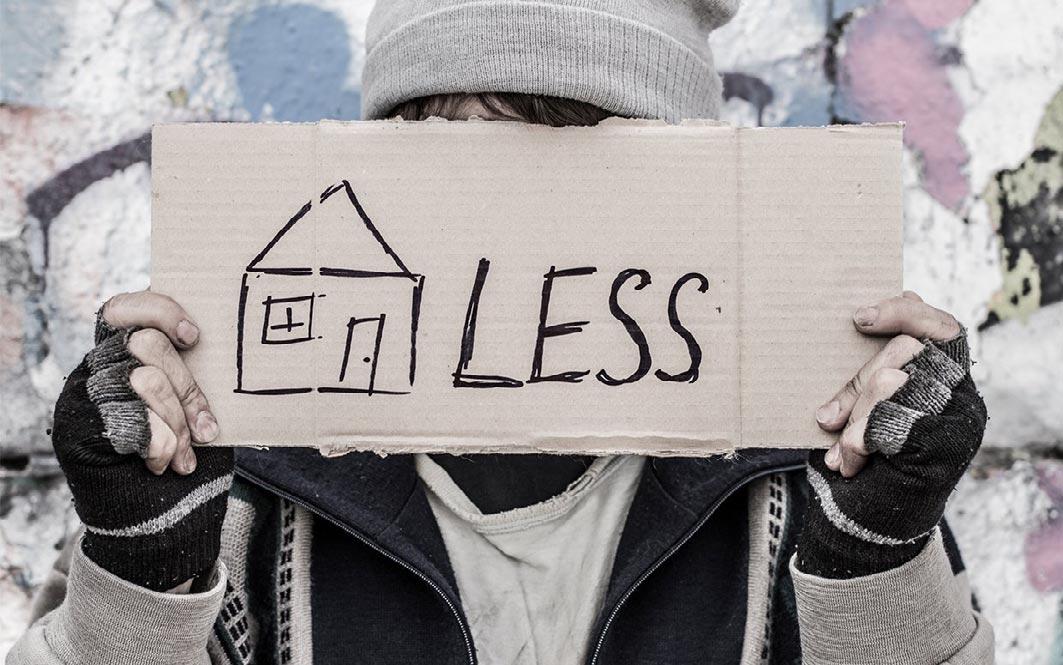
residing. On top of this, they must apply for housing assistance online with a housing application, provide this evidence, plus a medical assessment to be completed by the person’s GP.
If no crisis or transitional properties are available after 28 days, the person will be homeless again. It should be noted that it takes 28 days for a housing application to be assessed and approved or declined.
Crisis Accommodation offers a three-month respite to people in crisis. At the same time, a case worker should assist them with their housing documentation and nominate transitional properties if no DCJ properties are available. However, there are major shortages in this type of accommodation, which have been exacerbated by increasing homelessness and the cost of living crisis. There are also financial constraints, as individuals are expected to contribute 25% of their income.
Transitional Accommodation provides a longer-term solution, but with limited vacancies and reliance on service providers, individuals may still face uncertainty about permanent
With around 57,000 people in need of housing, the government needs to look at building more affordable social housing or regulating the private rental market so they are affordable to people.
housing options after the 12-18 month stay, despite assistance from caseworkers.
Affordable Housing is available for people working or completing further education (on low wages or part-time, who are not eligible for DCJ housing). Here, rent is also calculated at 25% of their income. This option offers hope for those on low incomes, but accessibility and eligibility criteria may limit its effectiveness, particularly
for individuals navigating complex systems without adequate support.
Social Housing, while providing a stable option with rent based on income, is plagued by maintenance issues and potential eviction threats for nonpayment or unsatisfactory behaviour, posing additional challenges for vulnerable tenants.
Though offering flexibility, Private Rentals are often financially burdensome for individuals on Centrelink payments, with landlords wielding significant power over rent increases and eviction decisions, further exacerbated by application fees and credit check requirements. During a cost of living crisis, the lack of legal protections for tenants makes this option risky for renters in their 70s and older who might live off the pension.
To relieve pressure on these housing options, Brown advocated for more social housing and more regulation: “As now there is a shortfall of around 57,000 for people in need of housing. The government needs to look at building more affordable social housing or regulating the private rental market so they are affordable to people.”
innersydneyvoice.org.au | Autumn 2024 | Inner Sydney Voice | 23
WHAT’S IN OUR PLACE?
Evanna Kelly is a 29-year-old student completing an Advanced Media and Journalism at TAFE Ultimo. In 2022, she created ‘Our Place’ — a multimedia, storytelling project that helped her learn about the people and community that made up her new home in the inner city.
The inspiration for this body of work began when I moved into a tall integrated housing building in inner-city Sydney. I recall the intense sense of comfort and security I felt in my tiny studio apartment high above the pavement; I felt safe in its tiny embrace.
Just a couple of months earlier, I was forced to evacuate my place in the
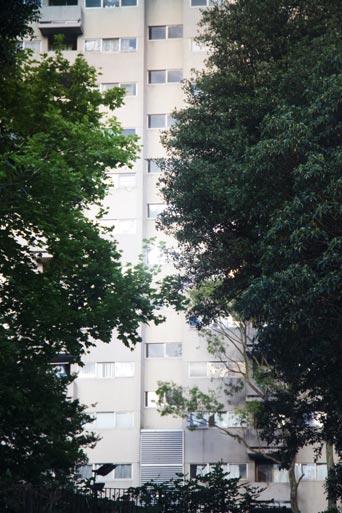
middle of the night amidst recordbreaking flooding. Ultimately, I had to leave my hometown of Lismore due to the worst natural disaster the area had ever recorded.
As I stood on the street below, gazing up at my new home amongst the cluster of 120 apartments, my ears were immediately drawn to my new wall-sharing neighbour, who seemed intent on turning the whole street into their own personal concert hall with their booming music. Ready or not, I
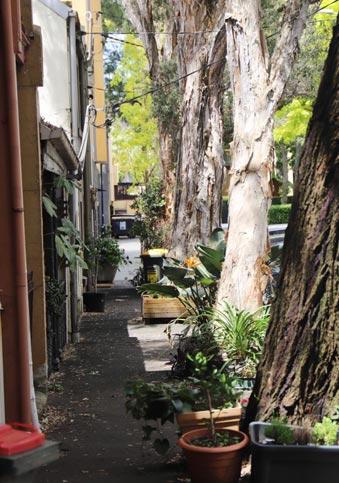
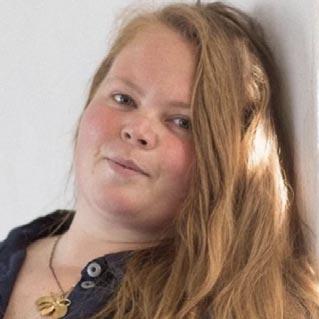
was about to be fully immersed in densely populated inner-city apartment living.
I loved the diversity and buzz of my new community. I wanted to know who else I was sharing this building with.
When I decided to become a storyteller, I always wanted to focus on human-interest stories. I am a firm believer that everybody has a story to tell. At this point, I had just experienced what it felt like to not have secure housing for a few months. I became
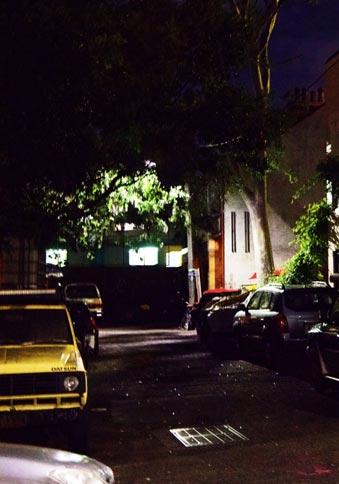
24 | Inner Sydney Voice | Autumn 2024 | innersydneyvoice.org.au
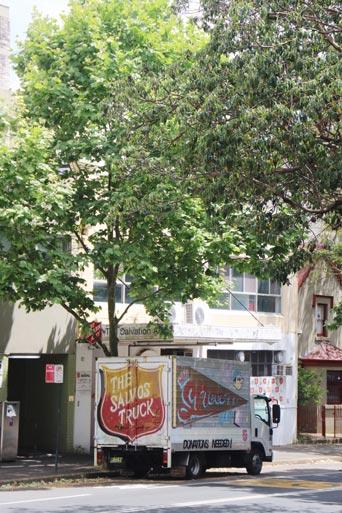
highly interested in the topic of housing.
I realised my experience was made so much easier by having friends and family to support me, as well as charity and government support. Imagine navigating homelessness or housing insecurity like that without it. I could not have done it on my own!
Safe, affordable, and secure housing is a basic human right that many people in our communities still fight for every day. When I started this project, I didn't know much about different housing types; I just knew that this community had incredible stories to tell. I wanted to tell the stories that mainstream media wasn’t telling. What are this community's realities,
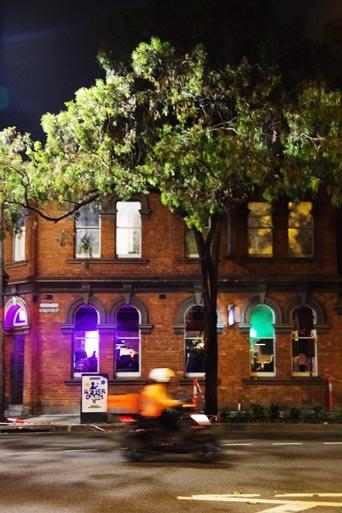
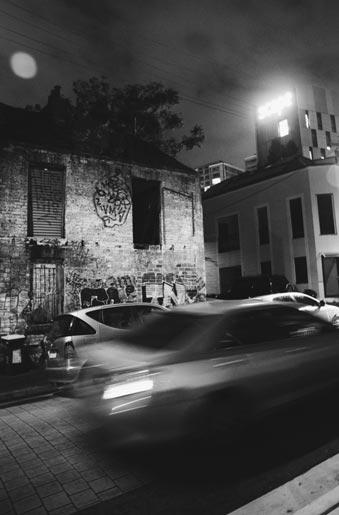
practicalities, hardships, needs and wants? And so, ‘Our Place’ was born.
‘Our Place’ has been featured in a TAFE-based photo exhibition featuring portraits I have taken of community members. It also features a short trailer for a podcast sharing part of their stories. The exhibition guests listened to the audio via a QR code as they moved around the gallery.
In 2024, I re-opened this project to branch out into the greater diverse housing community within the Sydney area, with a particular interest in public housing. I aim to gain a new level of community involvement and engagement. I have been seeking more people to get involved and am
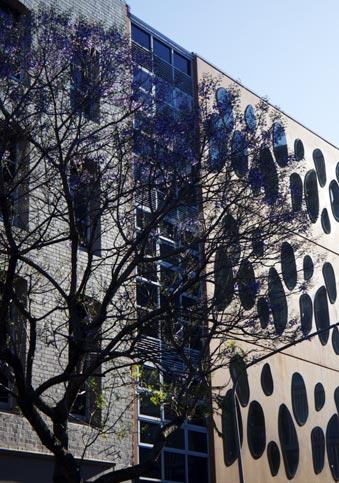

working with those passionate about social housing issues and those who know community members looking to tell their stories and be involved in developing this project.
n If you or someone you know lives in a diverse housing community and would like to share stories as part of the ‘Our Place’ project, contact ourplaceproject2024@gmail.com.
My goal is to interview 50+ people within the Sydney area. A launch event in late 2024 will introduce the project to the community. This will include photography, art, podcast samples and live art exhibitions to celebrate this community and encourage networking.
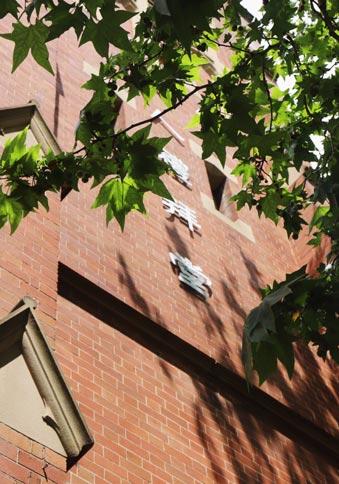
innersydneyvoice.org.au | Autumn 2024 | Inner Sydney Voice | 25
COMMUNITY VOICES

‘In the last 15 years rent has doubled, but my gross income has only increased by about 10%.’
Last October, ISV held a housing forum where services and individuals who work with Children, Youth and families in Central and Eastern Sydney discussed the housing affordability and accessibility crisis in our communities. One of the most significant feedback points was that people on the frontlines of the housing crisis weren’t being listened to. This crisis has been building for decades. To solve it, we need to centre on the voices of people who are living it. Here, two renters share their stories.
Brendan, 24
I am a landscaper in my mid-20s, and I’m looking for housing in the Inner West. For the last three months, I’ve slept on the living room floor of my parents' inner city apartment. Along with two friends, I am currently living in an insecure housing situation. We each earn what would have been considered a living wage a few years ago but now cannot get our foot in the door of the Sydney rental market. If we were on Centrelink, the situation would simply be impossible.
We scour housing apps week after week and attend any promising open houses, with our definition of ‘promising’ growing broader every week. We arrive each time hoping to discover that the property has enough problems that we can overlook but will put off other potential renters. If the property is too nice, then the other twenty-plus people at the open house are sure to apply, often offering more than the advertised price. When we entered a property last weekend, the house had a strong, musty smell, and I thought, “Yes, this is it; I can live with this”.
When we see groups of people our
age arriving with their parents, we have come to understand that the race is lost. We can’t compete with that money. At the same time, each application suggests that you can improve your chances of a successful application by paying further money for a credit check. Submission of bank statements, payslips, rental ledgers, multiple forms of ID, and fun little rundowns of who you are don’t seem to cut it anymore.
At this point, finding a private rental property just doesn’t seem feasible without sacrificing an unreasonable chunk of my weekly wage. Even renting with others does not seem promising.
Amanda, 55
As a single parent put on Jobseeker when my youngest was 8, I have worked multiple jobs and have child support. I have tried to avoid applying for social housing and have rented privately. In the 15 years of doing this, rent has doubled, but my gross income has only increased by approximately 10%.
“Affordable Housing” as 20% below market rate has limitations on the
minimum you can earn, often over $60,000 per annum (well above my income), which, in my books, generally makes you able to afford private rent. Rent assistance is about 15% of my rent now. The waitlist for social housing is approximately six years. The shared equity scheme is for people with savings, which many single parents do not have. You can’t use a personal loan, or cash gifts or (foolishly, I think) superannuation, and it would take years to manage to save a one to two percent deposit of Sydney’s metro sales that are more than one bedroom. New housing seems to be all aimed at one-bedroom solutions. I care for my elderly mother in Alexandria, my family lives in the Eastern Suburbs, and my daughters are at uni and school in the Inner West. So . . . what’s the solution for me when rents are increasing at a rate of knots? Can I stay in my great rental when my wages aren’t keeping pace?
n Want to share your thoughts? Send your housing stories to communications@innersydney voice.org.au.
26 | Inner Sydney Voice | Autumn 2024 | innersydneyvoice.org.au
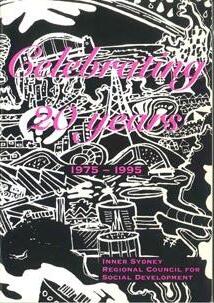

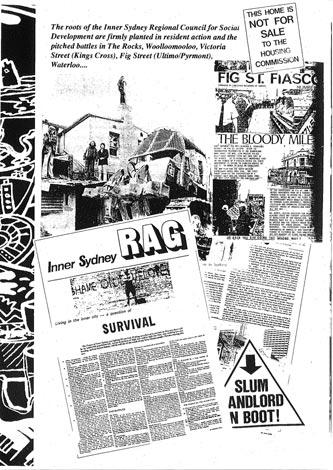

FROM THE VAULT 1995
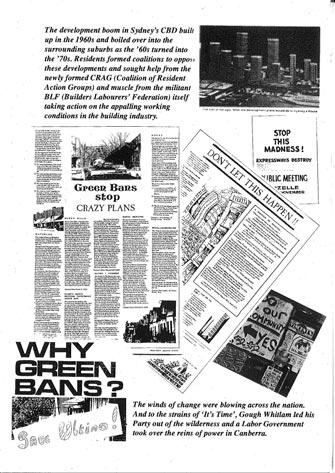

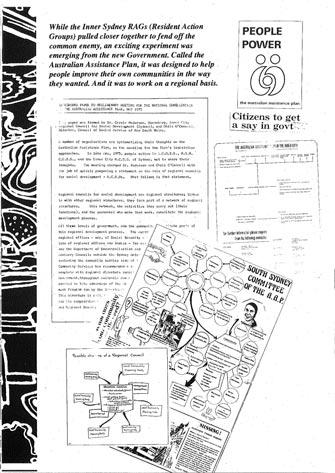

Celebrating 20 years OF INNER SYDNEY VOICE 1975-1995
“The roots of Inner Sydney Regional Council for Social Development are firmly planted in resident action and the pitched battles in The Rocks, Woolloomooloo, Victoria Street (Kings Cross), Fig Street (Ultimo/Pyrmont), Waterloo . . .
The development boom in Sydney’s CBD built up in the 1960s and boiled over into the ’70s. Residents formed coalitions to oppose these developments and south help from the newly formed CRAG (Coalition of Resident Action Groups) and muscle from the militant BLF (Builders Labourers’ Federation) itself taking action on the appalling working conditions in the building industry.
The winds of change were blowing across the nation. And to the strains of ‘It’s Time’, Gough Whitlam led his party out of the wilderness and a Labor government took over the reins of power in Canberra.
While the Inner Sydney RAGs (Resident Action Groups) pulled together to fend off the common enemy, an exciting experiment was emerging from the new government. Called the Australian Assistance Plan, it was designed to help people improve their own communities in the way they wanted. And it was to work on a regional basis.
innersydneyvoice.org.au | Autumn 2024 | Inner Sydney Voice | 27 ISV magazine Spring 1995, pages 4-6
WANT TO HAVE YOUR VOICE HEARD?
We’re always looking for new voices — opinion pieces, investigative articles, profiles of community organisations, interviews and more. If you have a feature idea, please contact the editor on 02 9698 7690 by email at comunications@ innersydneyvoice.org.au
SUBSCRIBE AND KEEP INFORMED
Subscribe to keep informed about social issues affecting the inner Sydney region and to receive four issues of ISV delivered to your inbox every year. Please contact our office on 02 9698 7690 or by email at admin@innersydneyvoice.org.au for more details or use the QR code, at right.

PROTEST OUTSIDE PUBLIC HOUSING IN WENTWORTH ROAD GLEBE SLATED FOR DEMOLITION AMID ONGOING HOUSING CRISIS, JUNE 2023
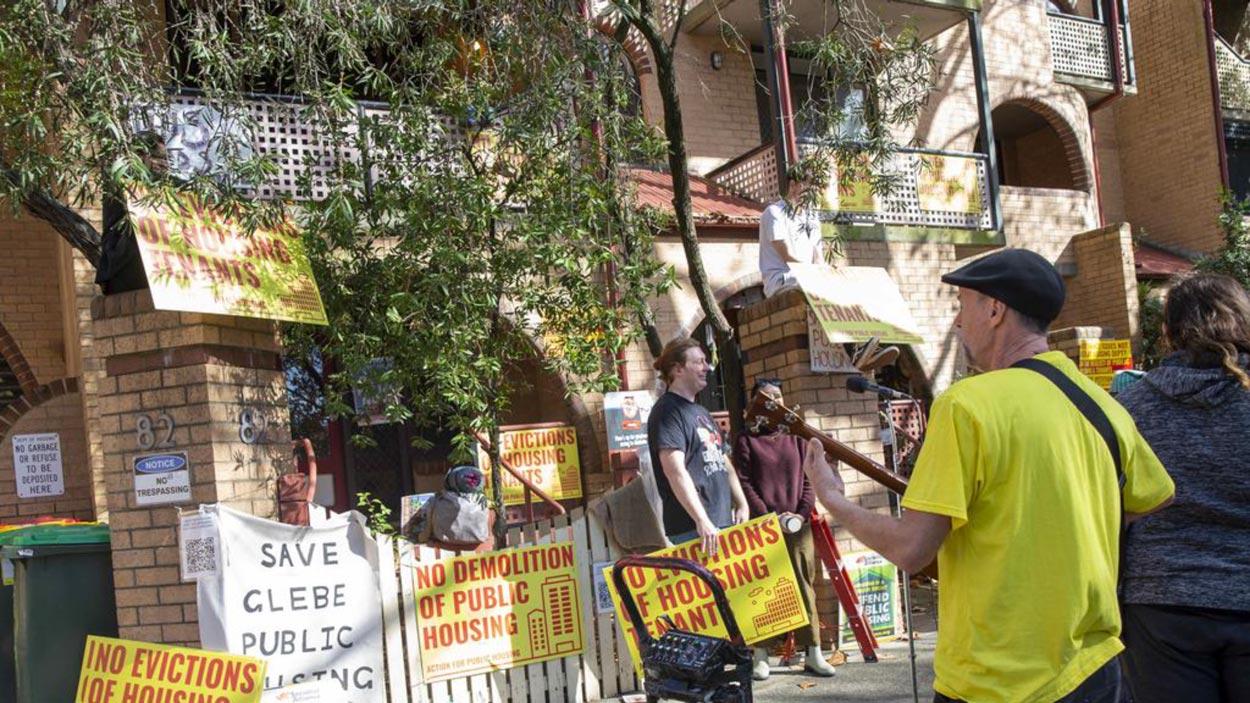

THE HOUSING CRISIS
28 | Inner Sydney Voice | Autumn 2024 | innersydneyvoice.org.au
NCA
VOICEINNER SYDNEY
PHOTO
NEWSWIRE/CHRISTIAN GILLES
EDITION
SPECIAL
























































